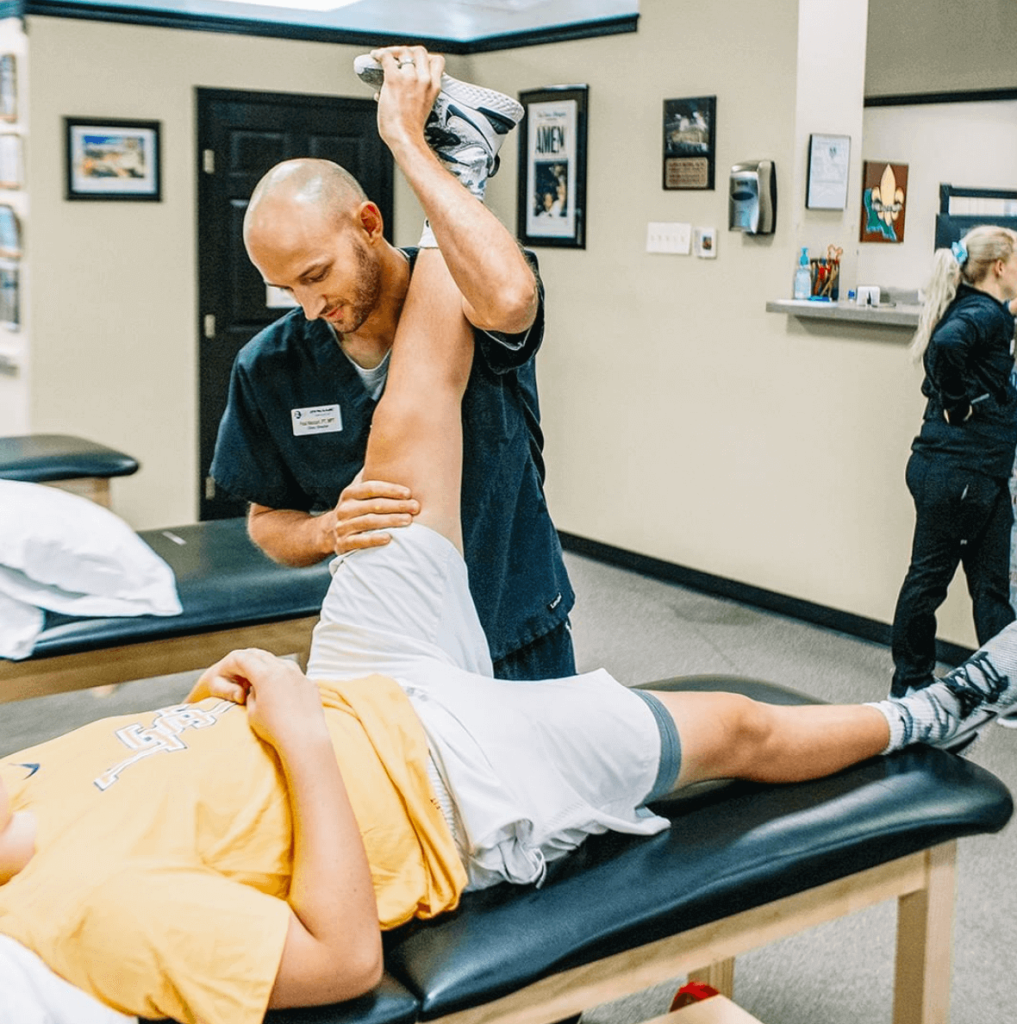You Don’t Have to Live with Shoulder Pain Any Longer
Shoulder Pain Can Limit Daily Activities - Physical Therapy Can Help
Shoulder pain can take many forms - it can show up when you’re reaching toward the top shelf to put dishes away or when you’re struggling to find a comfortable position to sleep in without feeling a dull aching pain in your shoulder and neck. It can show up as a result of an injury, making you feel as if your shoulder is immobile.
There are numerous reasons why someone may experience shoulder pain, and the severity can range from the temporary discomfort of a pulled muscle to the agonizing bone-on-bone friction of arthritis.
Whatever may be the cause of your shoulder pain, Dynamic Physical Therapy is dedicated to offering you natural pain management modalities. Contact us today to learn more.
What will a treatment plan for shoulder pain look like?
Physical therapy is a natural, easy, and comfortable way to find relief for shoulder pain, without the need for harmful drugs or invasive surgery.
Our Covington and Westwego, LA physical therapists have treated a number of conditions resulting in shoulder pain, with patients finding improvement and relief after just a few short sessions - and sometimes less!
Our physical therapists are movement experts, trained to pinpoint the cause of your pain through a variety of diagnostic techniques.
During your evaluation, we will examine your range of motion, strength, coordination, your medical history, joint mobility, and mechanics of your joint motion.
Once we have established the cause of your shoulder pain, we can create a specialized combination of physical therapy methods to manage and relieve your pain.
Gentle manual therapy helps to restore normal joint movement, ease soft tissue restrictions, and promote circulation, while specific therapeutic exercises restore strength, and the correct sequence of muscle activation around the shoulder joint.
Finally, we teach you techniques to enhance your strength and to prevent recurrence of future shoulder problems.
Why am I experiencing shoulder pain?
Your shoulder is capable of accomplishing many physical feats, and has the greatest range of all the joints in your body.
However, with its complexities also comes the possibilities of pain and discomfort. It is a “ball-and-socket” joint, meaning the head of the upper arm bone, or “humerus,” fits perfectly in the corresponding space within the shoulder blade, or “scapula.” The ends of the bone are protected by a thick layer of cartilage, protecting the bones from rubbing together.
Fluid-filled sacs called “bursae” also protect the tendons from rubbing against the bones. Tendons attach the bones in the shoulder to a set of bones, known as the rotator cuff. If something goes wrong with the intricacies that make up the mechanical interplay of the shoulder, pain can result.
The type of pain you feel in your shoulder can vary, depending on what is causing it. Pain from impingement, for example, typically occurs as you raise your arm up, and begins at a certain point in the range of motion.
Pain resulting from a degenerated shoulder may create persistent aches every time you move your arm in certain directions. Acute injuries can result in sudden and intense pains that make it impossible for you to move your shoulder at all.
Are you experiencing any of these shoulder pain conditions?
The complexities of the shoulder joint presents many opportunities for pain-causing conditions.
Some of the most common causes of shoulder pain include:
Frozen shoulder
Also known as “adhesive capsulitis,” frozen shoulder can occur if your arm has been in a case or sling for a while, or if you have been bedridden for an extended period of time. Furthermore, there are some ethnicities that are more predisposed, and women tend to have more instances than men. It is more common in women in the 40-60 years of age. Frozen shoulder results in a painful loss of motion in the shoulder with a tightening of the shoulder joint that severely limits motion.
Arthritis
The two main forms of arthritis that affect the shoulder are osteoarthritis and rheumatoid arthritis. Osteoarthritis occurs when the cartilage in the shoulder joint experiences significant “wear and tear,” typically due to age or excessive overuse. Rheumatoid arthritis occurs when the immune system decides to attack the membranes surrounding the shoulder joint, resulting in pain and inflammation. Both of these result in painful loss of motion, weakness to the shoulder muscles, and difficulty performing normal, daily tasks.
Impingement
Impingement typically occurs because of abnormal movement and tracking of the humeral head as you lift your arm overhead. Pain typically occurs when lifting your arm at or above 90 degrees.
Tendinitis
Tendinitis occurs when the shoulder joint is excessively overused typically due to the demands of a laborious job, overhead activity, or sport. Furthermore, poor posture is a major contributor, as this alters the normal forces on the tendons, and can set you up for tendon injury. This causes the tendons to undergo ongoing inflammation, resulting in swelling and painful impingement when raising your arm.
Rotator cuff tear
The rotator cuff is composed of 4 muscles, tendons, and soft tissue that surround the shoulder joint. The job of the rotator cuff is to correctly guide the movement of the shoulder joint. With injury, overuse, poor posture, or even age, the rotator cuff can be partially or completely torn. Depending on the severity and situation, sometimes surgery is needed, but often the correct physical therapy treatments can help reduce pain and restore strength to the rotator cuff to compensate for the partial tear. If surgery is needed, physical therapy is an integral part of the rehabilitation to a full recovery.
Could it be a rotator cuff tear? - a very common shoulder pain condition
While rotator cuff injuries sometimes require surgery if they are severe enough, there are several cases where physical therapy treatments can work just as well (if not better) than surgery.
According to the American Physical Therapy Association, “A recent study from Finland asserts that when it comes to treatment of nontraumatic rotator cuff tears, physical therapy alone produces results equal to those produced by arthroscopic surgery and open surgical repair.”
In this same study, a follow-up on 167 patients receiving physical therapy alone for their rotator cuff injuries, demonstrated that conservative treatment, such as physical therapy, should be considered as the primary treatment for this condition.
Your rotator cuff is composed of the muscles and tendons surrounding your shoulder joint. Sometimes, the rotator cuff can become torn or injured, due to repetitive overhead motions performed in sports (such as tennis) or jobs (such as carpentry.)
Those who experience rotator cuff injuries or “torn shoulders” generally report a dull ache deep in their shoulder, arm weakness, difficulty reaching behind their backs, and disturbed sleep due to pain. At Dynamic Physical Therapy, our natural and non-invasive methods can help relieve your shoulder pain and heal your rotator cuff injury.
At Dynamic Physical Therapy, we will conduct a physical evaluation and diagnostic tests to determine if you do indeed have a rotator cuff tear, and we will design a personalized treatment plan based on the needs of your diagnosis.
Ready to get started?
Don’t let your shoulder pain limit your physical abilities any longer! Our Covington or Westwego, LA physical therapy practice will get you the help you need to start living your normal life once again.
Call Dynamic Physical Therapy today to schedule your appointment and get started on your path toward pain relief.


